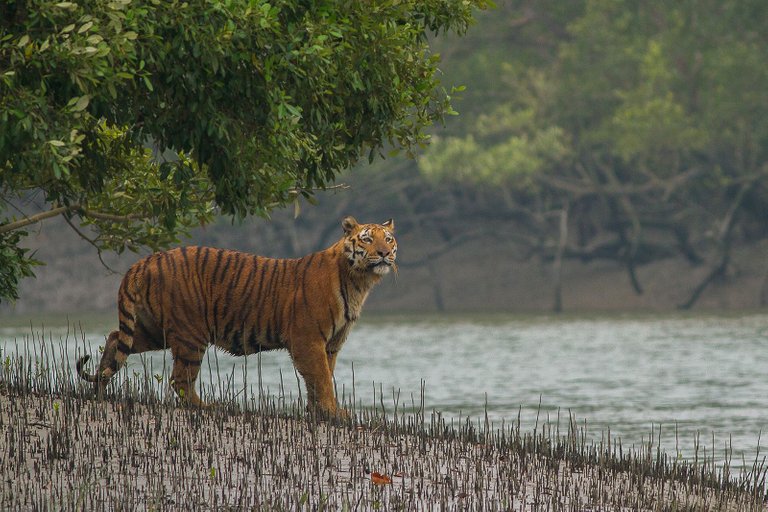The Sundarbans is a vast forest in the coastal region of the Bay of Bengal and considered one of the natural wonders of the world. It was recognised in 1997 as a UNESCO World Heritage Site of Bangladesh. Located in the delta region of Padma, Meghna and Brahmaputra river basins, this unique forest extends across Khulna, Satkhira, Bagerhat districts of Bangladesh and South 24 Parganas, North 24 Parganas districts of West Bengal, India. The Sundarbans contain the world's largest coastal mangrove forest, with an area of about 10,000 km2 (3,900 sq mi), of which about 6,000 km2 (2,300 sq mi) are located in Bangladesh and about 4,000 km2 (1,500 sq mi) in India. The Bangladeshi and Indian parts of the Sundarbans, while in fact adjacent parts of the uninterrupted landscape, have been listed separately in the UNESCO World Heritage List: as Sundarbans and Sundarbans National Park respectively. It is the world's largest delta. The Sundarbans is a network of marine streams, mud shores and mangrove forests. The region is known to contain numerous wildlife species, birds and reptiles, including Bengal tiger, chital, crocodile, snakes. Since 21 May 1992, the Sundarbans is recognized as a Ramsar Site of ecological importance

There is much more wildlife here than just the endangered Bengal tiger (Panthera tigris tigris). Most importantly, mangroves are a transition from the marine to freshwater and terrestrial systems, and provide critical habitat for numerous species of small fish, crabs, shrimps and other crustaceans that adapt to feed and shelter, and reproduce among the tangled mass of roots, known as pneumatophores, which grow upward from the anaerobic mud to get the supply of oxygen. Fishing cats, macaques, wild boars, common grey mongooses, foxes, jungle cats, flying foxes, pangolins, and spotted deer are also found in abundance in the Sundarbans.

he management of wildlife is restricted to, firstly, the protection of fauna from poaching, and, secondly, designation of some areas as wildlife sanctuaries where no extraction of forest produce is allowed and where the wildlife face few disturbances. Although the fauna of Bangladesh have diminished in recent times[6] and the Sundarbans has not been spared from this decline, the mangrove forest retains several good wildlife habitats and their associated fauna. Of these, the tiger and dolphin are target species for planning wildlife management and tourism development. There are high profile and vulnerable mammals living in two contrasting environments, and their statuses and management are strong indicators of the general condition and management of wildlife. Some species are protected by legislation, notably by the Bangladesh Wildlife (Preservation) Order, 1973 (P.O. 23 of 1973).[26]
